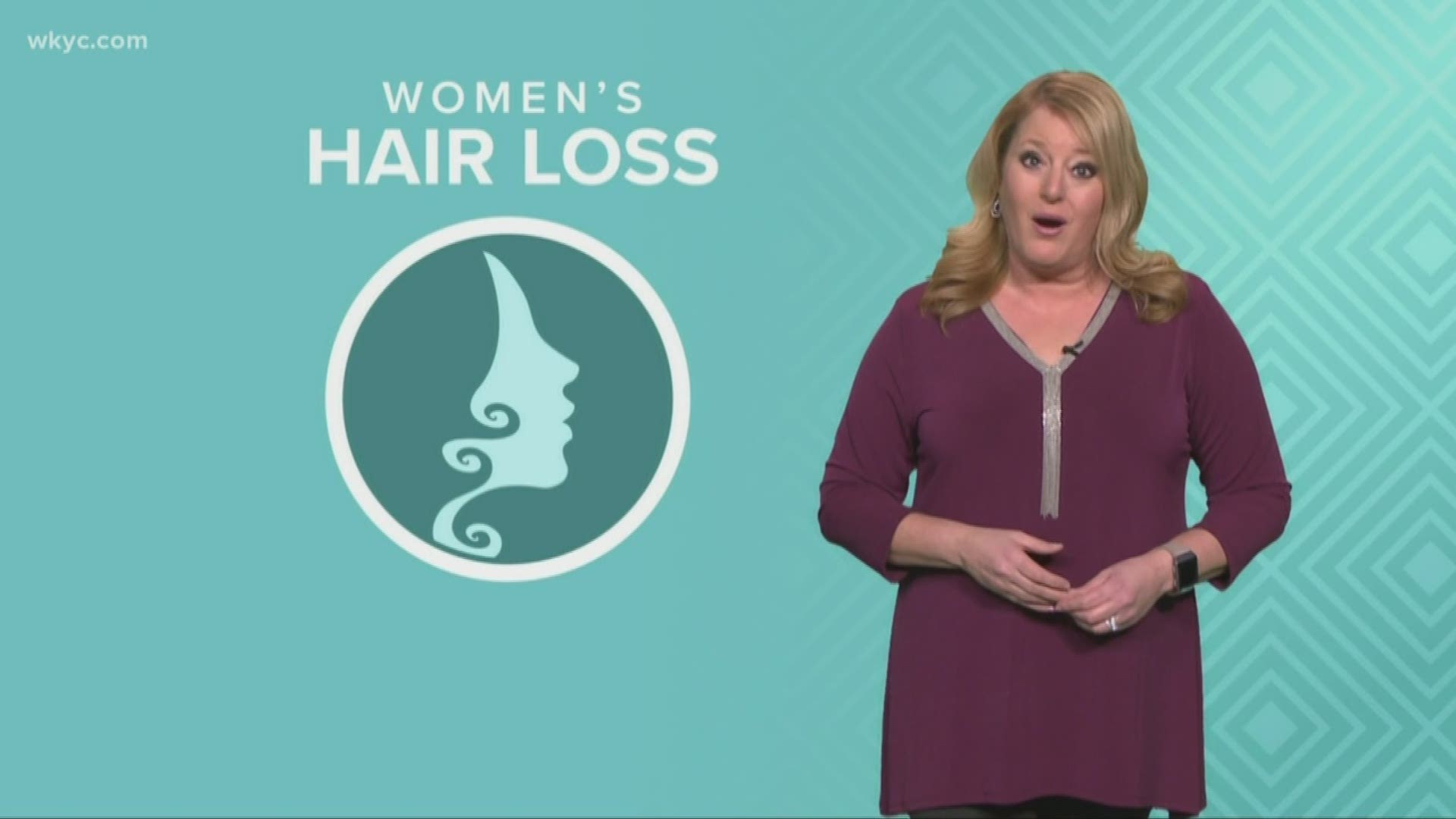CLEVELAND — If you think hair loss only affects men, you’d be mistaken. Half of all women will experience hair loss too. The causes vary from hormones, age, childbirth to even hairstyles.
Medical hair loss is also a common cause. It’s well known that chemotherapy can cause hair loss, but there are other conditions too. Such as thyroid disorders, alopecia and even severe stress.
But in my case, I lost hair after my surgery. It’s one part of my recovery from a brain tumor that I haven’t shared until now. By doing so, I hope that other women dealing with the same issue will know that they are not alone and there are options they might consider.
At first, when my surgeon stitched me up with 51 staples I was shocked at how little they had to shave my head for brain surgery. But my relief was short lived. Instead of growing back in, over the weeks, my hair fell out in the front part of my head leaving a gaping bald spot.
RELATED: #MonicaRocks | 3News' Monica Robins shares her road to recovery from surgery to remove brain tumor
I managed to hide it using the hair I still had and making my part a little further over. But to go back to work, I had to have a better plan in place. Also I knew in spite of my best efforts, mother nature would give up my secret on a windy live shot.
I thought Hair and Scalp Specialist Jeffrey Paul may have an answer. I’d done stories before on his 3-D hair pieces, but little did I know I’d come back to him for personal help.
Paul is familiar with creating what’s known as hair prosthetics for medical hair loss. Patients who lose patches and don’t need an entire wig.
“It’s not even designed in a factory, it’s designed in a laboratory for your need and that’s a prosthetic,” Paul says.
They color matched my hair and the piece would be attached to my head with medical adhesive for 21 days at a time.
“Anytime that you’re attaching hair to areas that are not any longer hair bearing or partially bearing like yours that’s a prosthetic, it needs a breathable membrane, it needs something that allows adhesive to be adhered to it and the kind of adhesive that is medically approved,” Paul says.
I can shower, swim and treat it like my own. But I need to care for it differently using a five step hair system that includes protein and conditioners. What’s more important, my own hair can grow underneath.
“What we’ve created is a lace liner so that the hairs have been hand tied to that to get very natural hair,” Paul says.
The piece is made from real human hair and during each visit it’s removed and cleaned and my scalp is cleaned and prepped too. As my hair grows, the pieces are made smaller to cover less area. I don’t know if all of my hair will grow back, but having this gives me piece of mind that at least I have some coverage.
“There is more available in hair today than there ever has been and it’s just getting the right one for you and that’s where the consultation becomes so important,” Paul says.
Paul and other specialists like him are fighting to get hair prosthetics for medical hair loss covered by insurance and they even managed to get an insurance code, but as of now it’s an uphill battle in cases like mine. But I’ll let you know if I get anywhere with my insurance.
Cost depends on what you need and the size you need covered so each case is different. But Paul adds it’s important to at least talk to a specialist because going with a store bought wig could actually do damage to fragile hair follicles.

